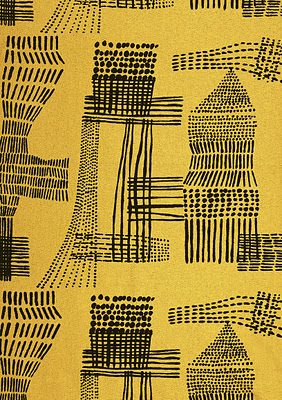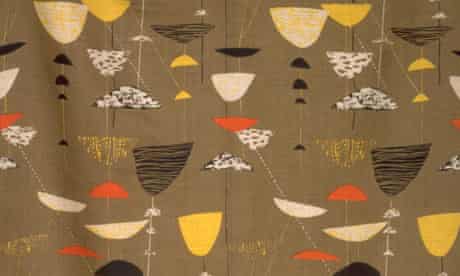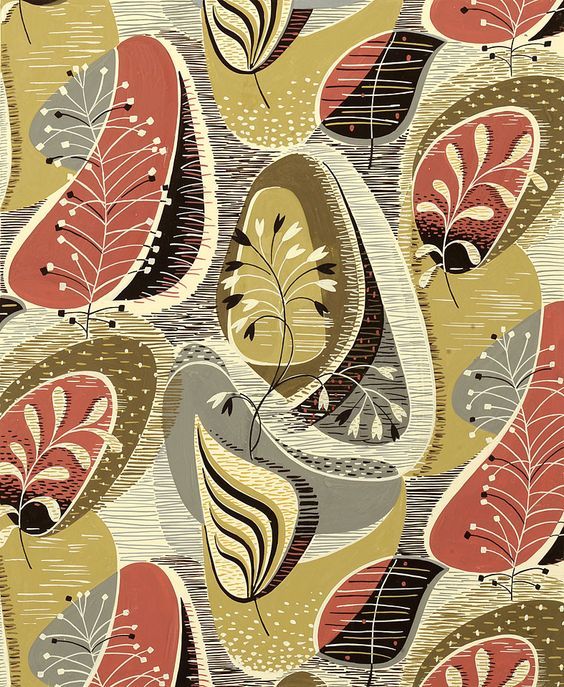
The Top Ten Textile Designers That Created a Vision
Lucienne Day
A well-known textile designer back in the 1940s, Lucienne was a woman who was credited with adding colour back into the wardrobes of Post World War Two Britain, Lucienne Day was inspired by the likes of Kandinsky.
She started out designing fabrics for dresses and women’s apparel, but she quickly became influenced by the Houses for People Movement and then also started designing carpets, table linen, and curtains.
Terence Conran
Textile designer Terence Conran was the master designer behind well-known brands such as Habitat, Terence opened two manufacturing companies during the 1950s, called ‘Conran furniture’ and ‘Conran fabrics’.
His aim was to bring attractive, affordable designs to the masses, and in 1964 he was able to open his first Habitat in Brompton Cross. By the end of the decade, Habitat had nine branches in the UK and a reputation for inexpensive, affordable appealing designed products, specialising in contemporary furniture, textiles, kitchenalia as well as home furnishings, lamps, and shades.

Mary White
Was one of the most iconic textile designer and printmakers of 1950s. Mary White’s textile fabric designs put her in the limelight after they were featured on the Queen Mary Ocean Liner and at Heathrow Airport. Like Morris, Mary White’s textile designs are all inspired by nature. Her wonderful iconic prints are still used today as inspiration for many designers.
William Morris
William Morris was known as the ‘Father of the Arts and Craft’s movement, Morris floral patterns were very heavily influenced by Victorian interior design. He was good friends with Dante Gabriel Rossetti who persuaded him to first pick up the paintbrush.
He soon expanded his line to furniture and created wallpapers, patterns, and fabrics that are all inspired by his love of nature and the house he decorated for his wife Jane is still visited today.
Cath Kidston
Cath Kidson is well known all over the world for her fabulous floral prints, she first started out as an interior designer, but then she changed her mind and decided to become a textile designer and design textile prints with an ‘English heritage’ theme. Coining the phrase ‘modern vintage’, her pastel floral designs were instantly a success.
Laura Ashley
Laura Ashley was a textile design company, founded in Wales, England, by Bernard Ashley and his wife Laura. Is now known worldwide as Laura Ashley.
From her love of nature and all things floral, Laura began designing tea towels, table mats, and napkins, whilst working as a secretary.
Her inspiration came when she visited a Women’s Institute bring and buy sale and saw all the wonderful handmade items that she started to create women’s headscarves in 1953.
Luckily for Laura, her business skyrocketed after Audrey Hepburn was spotted wearing one of her scarves in the film ‘Roman Holiday with Gregory Peck.
Zika Ascher
Zika Ascher came to England from Prague in 1939, Zika set up a small textile business in London with his wife Lida.
The couple commissioned a number of leading artists such as Matisse and Henry Moore to design a collection of scarves to brighten up the drab wardrobes of Post War Britain.
By 1946, Zika was supplying fabrics to the international fashion industry and became renowned for their lively screen-printed designs.

Mary Quant
Mary Quant is a British fashion designer and fashion icon. Mary became a well-known figure in the 1960s. Ahe was based in London. And was heavily influenced by the youth fashion movement.
As a textile designer, her prints were an iconic part of the 1960s and she was one of the designers who took credit for the miniskirt and hotpants, and by promoting these and other fun fashions she encouraged young people to dress to please themselves and to treat fashion as a game.
Ernestine Carter, an authoritative and influential fashion journalist of the 1950s and 1960s, wrote: “It is given to a fortunate few to be born at the right time, in the right place, with the right talents. In recent fashion, there are three: Chanel, Dior, and Mary Quant.

Charles Voysey
(1857 – 1941) he originally trained as an architect, but then went on to train as a textile designer who sold his first textile pattern in 1883.
His work was influenced by the wonderful flattened, linear style of Japanese art, and he used nature motifs with stylised and outlined forms.
Charles loved bold colour print contrasts but was also famous for patterns that used pastel colours.

Owen Jones
He was also one of the most influential design theorists of the 19th century. He helped pioneer the modern colour theory and his theories on flat patterning and ornaments still resonate with contemporary designers today! Cool, huh?
Jones was inspired by Islamic design and used his studies of Islamic decoration at the Alhambra to develop theories on flat patterning, geometry, and abstraction in the ornament.
The Surface Pattern Marketplace designers are based all over the world and many work from their own studios.
They also have a vision – To create one of kind commercial print designs in their own hand, regularly taking inspiration from iconic textile
designers around the world.
View the latest New In collections
The Surface Pattern Marketplace is an online platform for textile designers to offer and license their designs to buyers worldwide.
Surface Pattern & Textile Designs for purchase or license from £39.00 GBP. All available to purchase and download immediately.
Plus offering bespoke designs and design collections on request through our in-house design studio.
Contact us for details: info@surfacepatternmarketplace.com
Surface Pattern Marketplace Ltd
If you would like to know more please email us.





